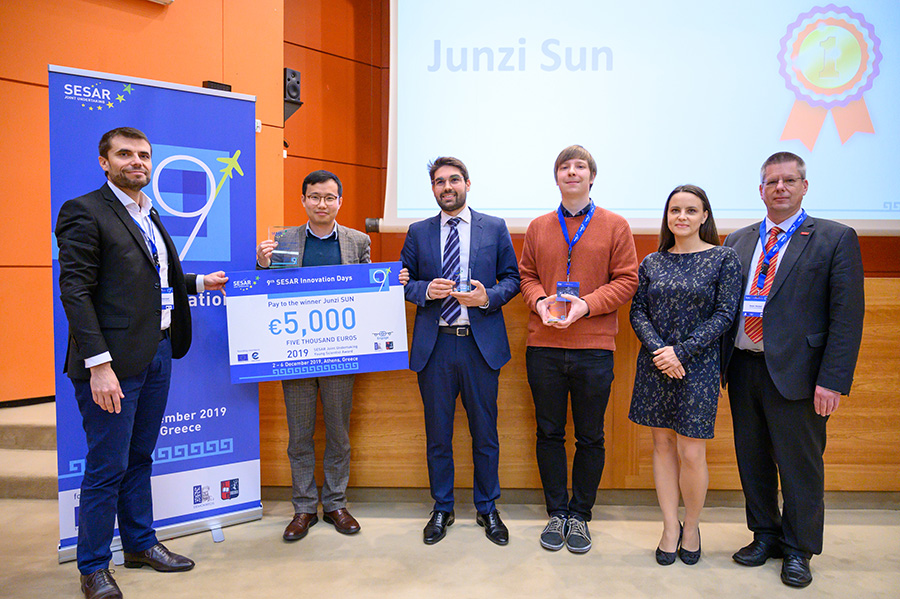In December 2019, Junzi Sun was awarded the SESAR Young Scientist Award for his research on open aircraft performance modelling. In this article, he describes his academic trajectory to date and highlights the areas of ATM where young researchers should be channeling their curious and critical minds in the coming years.

I have a diverse research background. For my bachelor’s degree in China, I studied telecommunications and computer science. Thanks to several summer internships in the aerospace domain in Canada, France, and China, my interest in the sector grew, and I started to move my research in this direction. After completing my undergraduate studies, I moved to Europe. I completed a master’s degree in aerospace science and technology at the Polytechnic University of Catalunya. At the same time, I worked as a researcher for a young aerospace technology centre in Barcelona, Spain. My research at that time centered on navigation, communication, and unmanned aerial vehicles, all of which brought me closer to the specific domain of air traffic management. After my master’s degree and a few additional years of research and management work, I joined the Aerospace Engineering Faculty at the Delft University of Technology (TU Delft) as a PhD student. Since joining the TU Delft, my research has focused on air traffic management, specifically on large-scale air traffic simulations and aircraft performance modeling and analysis.
Why is researching ATM important to Europe’s citizens and economy
During my time in Europe, I have seen a constant increase in mobility, especially in air transportation. If you take a look at the map, the distance between the most northern capital (Helsinki) and southern capital (Lisbon) of two European countries is about 3,500 kilometres. Compared to other modes of transportation, air transportation is still the most efficient way to connect distant cities. However, in many cases, it may not be the most environmentally friendly way to connect cities.
In my opinion, better ATM research in Europe does not necessarily mean more air traffic. On the contrary, how to connect passengers within Europe with maximum efficiency and minimum environmental impact are the two most important challenges for ATM research. On the one hand, we need progressive changes to better utilise our airspace, integrate automation, and reduce fuel consumption. On the other hand, as researchers, we also need to promote a drastic paradigm shift that will guide society to make rational choices regarding every flight that takes off in the future.

